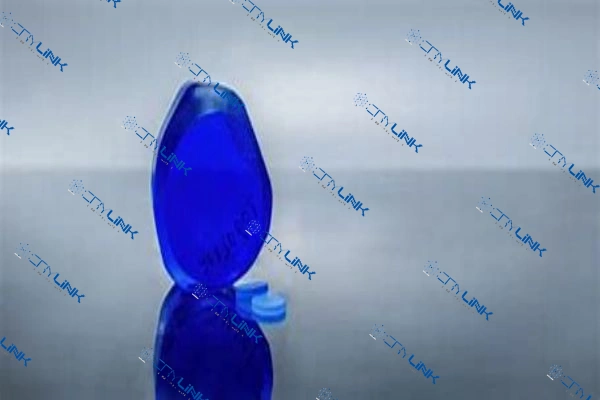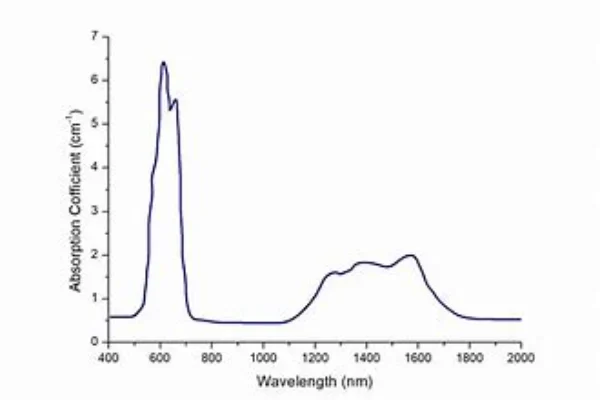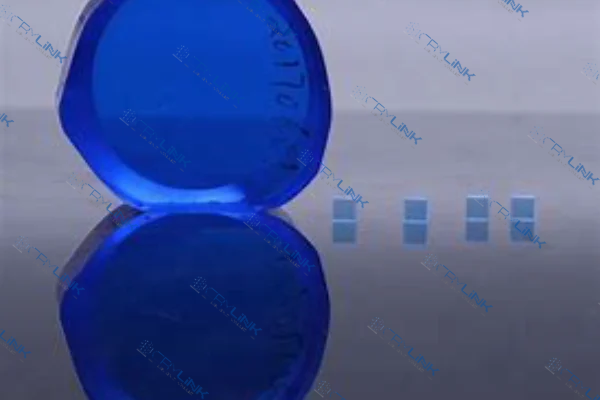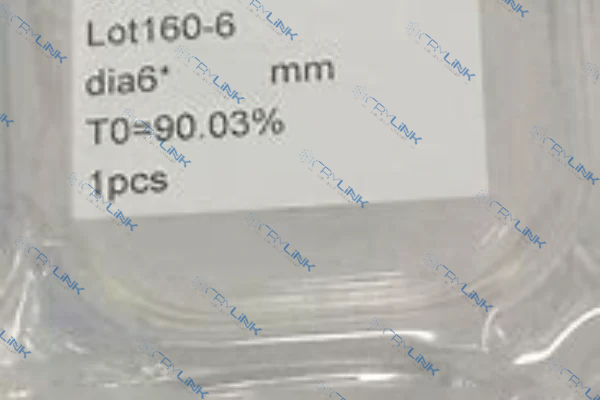Introduction
The field of crystallography has seen substantial progress over the years, with an ever-increasing array of unique and fascinating crystals discovered and studied. One such intriguing crystal is Cobalt Spinel (Co: Spinel). In this comprehensive guide, we dive into the top 10 frequently asked questions about Co: Spinel crystals, elucidating their properties, uses, and significance in various fields.
What are Co: Spinel Crystals?
Cobalt Spinel, colloquially known as Co: Spinel, is a unique variety of spinel crystal, which has been doped with cobalt ions. The result is a crystal possessing a deep blue color, not unlike that of sapphire. This attractive hue, however, is not the sole remarkable trait of Co: Spinel. The crystal’s extraordinary properties extend far beyond its aesthetic appeal, making it a crucial element in several fields of technology and research.
The primary structure of Co: Spinel is based on a regular arrangement of magnesium aluminate (MgAl2O4) units. However, during the synthesis process, a certain portion of the aluminum ions in this lattice are replaced with cobalt ions. This alteration, though seemingly minor, profoundly impacts the crystal’s properties.
One of the most notable features of Co: Spinel is its impressive optical characteristics. The crystal exhibits a high refractive index, which refers to the crystal’s ability to bend or refract light. This property, combined with its excellent optical clarity, makes Co: Spinel an ideal material for a wide range of optical applications.
Co: Spinel also boasts exceptional stability, both chemically and thermally. It’s resistant to corrosion, can withstand high temperatures without degradation, and maintains its structure under various harsh conditions. This durability makes Co: Spinel particularly useful in industries that demand materials capable of performing under extreme settings.

How are Co: Spinel Crystals Formed?
The process through which Co: Spinel crystals form is a fascinating one. As noted, this process occurs under extreme conditions deep within the Earth’s crust. The high temperatures and pressures characteristic of these geological environments facilitate the formation of magnesium aluminate, the primary component of Co: Spinel crystals.
The base structure of a spinel crystal comprises of a cubic arrangement of magnesium aluminate units. This structure is incredibly stable, capable of withstanding the intense conditions present during formation. However, Co: Spinel is not merely a standard spinel crystal. Its distinctive blue color and other unique properties result from a significant alteration in the spinel’s structure: the introduction of cobalt ions.
During the formation of Co: Spinel, cobalt ions replace a portion of the aluminum ions in the magnesium aluminate lattice. This ion exchange process, or doping, happens naturally during the crystal’s formation when cobalt is present in the environment. The cobalt ions integrate into the crystal’s lattice, altering its physical and chemical properties without disrupting its overall stability.
Distinguishing Features of Co: Spinel Crystals
When it comes to defining the attributes of Co: Spinel crystals, one must look beyond their captivating blue color. The crystal’s unique characteristics stretch far beyond its visual appeal, and these distinguishing features make it a highly valuable material in a variety of industries.
One of the primary distinguishing features of Co: Spinel is its high refractive index. A crystal’s refractive index determines how much it can bend light. Co: Spinel’s high refractive index, coupled with its outstanding optical clarity, enables it to refract light effectively, making it an excellent material for optical applications. This crystal is often used in the manufacturing of precision optical components like lenses and prisms, which require materials that can bend and direct light with high accuracy.
Additionally, Co: Spinel boasts excellent hardness, which enhances its durability and resistance to wear and tear. This hardness allows the crystal to maintain its structure even under considerable mechanical stress. It’s this robustness that makes Co: Spinel a preferred material in industries such as aerospace, where components must endure high pressures and resist degradation over time.
Co: Spinel also exhibits exceptional thermal stability. It can withstand high temperatures and rapid changes in temperature without losing its structure or functionality. This property is particularly significant in industries like electronics and aerospace, where materials must perform reliably under varying thermal conditions.
Lastly, the cobalt doping in Co: Spinel results in unique optical absorption properties. It absorbs light in the green spectrum, leading to its vibrant blue color, which is not just aesthetically pleasing but also useful in applications requiring specific light filtering capabilities.

The Role of Co: Spinel in Optics
Co: Spinel crystals’ unique optical properties make them indispensable in the field of optics. Their high refractive index and exceptional optical clarity are central to their utility in creating high-quality optical components.
The refractive index of a material is a measure of how much it can bend or refract light. In Co: Spinel, this value is significantly high, allowing it to bend light effectively and transmit it without much dispersion. This property is particularly crucial in the production of lenses, where the precise control of light is essential. As such, Co: Spinel is often used to manufacture high-end lenses for various applications, including telescopes, microscopes, and cameras.
Additionally, the crystal’s superior optical clarity makes it an excellent choice for applications that require minimal light loss. Optical clarity refers to a material’s ability to transmit light without scattering it, ensuring that the light passing through remains coherent and retains its original properties. The excellent optical clarity of Co: Spinel is beneficial in creating components like prisms, which rely on minimal light scattering to function effectively.
Furthermore, Co: Spinel’s distinct optical absorption properties enable it to absorb specific wavelengths of light, a feature useful in specialized optical systems that require spectral filtering. The crystal’s absorption of green light and transmission of blue light give it unique filtering properties, enabling its use in systems requiring specific light wavelengths.
Lastly, the crystal’s durability and resistance to scratching also add to its value in optical applications. Its hardness ensures the longevity of the optical components made from it, reducing the need for frequent replacements and maintenance.
In conclusion, Co: Spinel’s unique optical properties and durability make it an invaluable resource in the field of optics. Its role extends beyond merely facilitating better vision; it contributes significantly to advancements in imaging technology, shaping how we see and understand the world around us.

Co: Spinel in Aerospace Technology
Co: Spinel’s unique properties, particularly its resistance to thermal shock and excellent hardness, make it an invaluable material in aerospace technology. Its ability to withstand extreme conditions and maintain its structural integrity even under significant stress positions it as a key material in this field.
One of the most prominent applications of Co: Spinel in aerospace technology is in the production of infrared (IR) windows and domes. These components are crucial elements of heat-seeking missiles and high-speed aircraft. They need to allow IR signals to pass through them while simultaneously protecting sensitive internal components from external environmental factors.
Co: Spinel’s thermal shock resistance becomes critical in such applications. High-speed flight and missile launch environments can expose materials to rapid changes in temperature. Materials used in such applications need to handle these temperature variations without suffering damage or performance loss. With its excellent thermal stability, Co: Spinel meets these requirements, making it an ideal choice for IR windows and domes.
Furthermore, the hardness of Co: Spinel adds to its value in these applications. Aerospace components must resist damage from debris and other environmental factors that could compromise their integrity or functionality. Co: Spinel’s hardness provides an inherent resistance to such risks, ensuring the longevity and reliability of the components made from it.
Additionally, Co: Spinel’s low electrical conductivity makes it a preferred choice in aerospace technology. In an industry where preventing electrical interference is critical, using materials that do not conduct electricity can significantly enhance the safety and efficiency of the systems.

Co: Spinel in the World of Electronics
The use of Co: Spinel extends into the world of electronics, where its unique properties play a crucial role in the design and operation of various devices and components. Specifically, the crystal’s low electrical conductivity and high temperature resistance stand out as particularly beneficial for this industry.
In electronics, the ability to insulate and isolate electrical components is critical. Preventing unwanted electrical paths and ensuring that electricity flows where it’s intended are vital to the functionality of electronic devices. Co: Spinel’s low electrical conductivity makes it an excellent insulating material. By incorporating Co: Spinel into the design of electronic components, manufacturers can help prevent electrical short-circuits and enhance the safety and reliability of their devices.
Furthermore, electronic devices often generate heat during operation, and some components can become extremely hot. Materials used in these devices need to withstand these high temperatures without degrading. Co: Spinel’s exceptional thermal stability allows it to resist high temperatures and maintain its structure, making it a suitable choice for such applications.
Moreover, Co: Spinel’s hardness and resistance to wear contribute to the durability of electronic components made from it. Devices incorporating Co: Spinel can withstand the rigors of regular use without suffering damage, extending their lifespan and reducing the need for repair or replacement.

Co: Spinel’s Environmental Impact
Co: Spinel’s environmental impact is notably minimal, largely owing to its synthetic production capability. Natural extraction methods such as mining often pose significant environmental threats, leading to deforestation, soil erosion, and habitat destruction. Moreover, harmful substances are frequently released into the environment during mining, contributing to pollution.
However, Co: Spinel can be synthesized in laboratories, providing a more eco-friendly alternative. This method involves the combination of magnesium, aluminum, and cobalt under controlled conditions that mimic the natural formation process, essentially eliminating the need for environmentally disruptive mining.
Furthermore, laboratory synthesis of Co: Spinel ensures consistency and quality, producing crystals with specific properties and fewer impurities. This makes them ideal for applications that demand high purity and consistency.
In conclusion, Co: Spinel’s ability to be lab-synthesized significantly reduces its environmental impact, rendering it a valuable, sustainable material across various industries. It underscores the importance of finding a balance between technological progress and environmental preservation in our pursuit of future advancements.

Future Prospects of Co: Spinel
The future for Co: Spinel is exciting, with potential applications expanding due to continuous technological advancements. While it’s already valued in optics, aerospace, and electronics, new applications are being explored that could further enhance its relevance.
Solar cells are one potential avenue, with research suggesting Co: Spinel’s high optical clarity and light absorption could improve solar power system efficiency. Energy storage is another promising area, as Co: Spinel’s thermal stability and low electrical conductivity align with the requirements of lithium-ion batteries, potentially leading to safer and more efficient energy storage solutions.
Moreover, Co: Spinel’s unique properties might also prove valuable in quantum computing, a field in its nascent stage but poised to revolutionize technology. The crystal’s distinct optical and electrical characteristics could be beneficial in handling quantum information.
In essence, Co: Spinel’s future prospects are extensive and promising. As research progresses, its role in technology could continue to expand, indicating its importance in shaping a technologically advanced and sustainable future.

Absorption Spectrum of Co: Spinel
The absorption spectrum of a Co: Spinel crystal is a key aspect of its unique properties. The spectrum is characterized by a broad absorption band in the visible light region due to the presence of cobalt ions. This absorption band is predominantly in the green region of the light spectrum, around 550 nanometers, giving the Co: Spinel crystal its intense blue color.
The absorption band’s exact location can slightly vary depending on the cobalt ion concentration and the specific conditions under which the crystal is synthesized. However, the crystal generally exhibits strong absorption of green light, making it useful in applications where such spectral filtering is required.
The unique absorption spectrum of Co: Spinel, combined with its high refractive index and thermal stability, makes it a valuable resource in optical applications. These include, but are not limited to, laser technology, spectrophotometry, and photonics.
How does Co: Spinel compare to other optically active crystals?
Co: Spinel holds its own when compared to other optically active crystals. Its high refractive index, thermal stability, and hardness make it ideal for various optical applications. However, every crystal has unique properties that may make it more suitable for specific uses. Comparing Co: Spinel to other crystals helps us understand where it excels and where other crystals may be more appropriate.
Conclusion
Co: Spinel crystals hold an esteemed position in the scientific world due to their unique attributes and versatile applications. By continuing to explore their potential, we can unlock new technological advancements that will shape the future.

Frank
Frank graduated from the University of Shanghai for Science and Technology, majoring in optics. As a technical engineer at Crylink Company, he deeply understands crystal materials and laser components.
Related Video(s) with this Article
Related Product(s) with this Article
Related Application(s) with this Article
